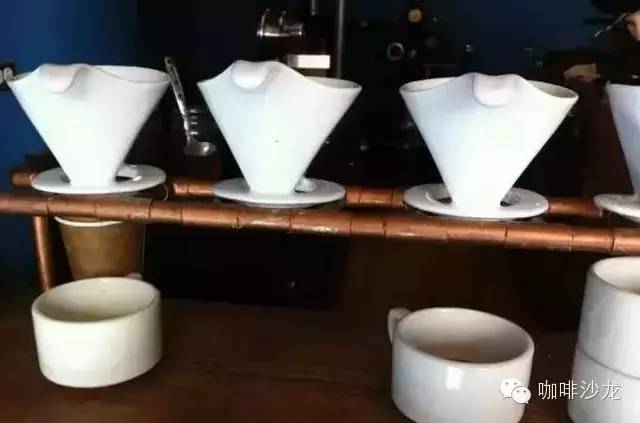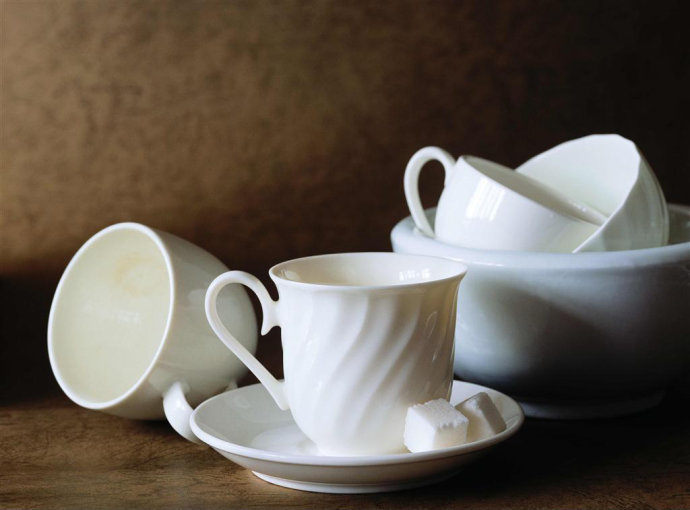The working principle of the classic Italian commercial coffee machine E61 to solve the problem of leakage and blockage of the head
The e61 brewer first appeared on the Faema E61 coffee machine in 1961 and is a sophisticated design that has become a classic of espresso machines. Nearly 50 years after its birth, there are still many espresso machine manufacturers equipped with such brewing heads on some models of machines.

What are the advantages of the e61 brewing head that make it popular for so long? Here is a brief introduction to e61 brewing by quoting the information on home-barista.com, hoping to help those who want to understand the structure and principle of e61 brewing head.
Let's first look at the profile of the e61.

Unlike ordinary brewing heads, e61 has two water pipes connected to the boiler (or heat exchanger), the upper one is called the water inlet, and the lower one is called the water return. The hot water in the boiler enters the cavity 1 from the water inlet, heats the boiling head, reduces the temperature of the hot water after heat exchange, and the density of the cooled hot water increases with greater gravity, thus generating downward flow and flowing back to the boiler from the water return port. Hot water circulates naturally in the piping system composed of boiler and brewing head, which is called thermosiphon effect. The boiler heat is used to heat and insulate the boiler head, which is a major function of e61.
Another feature of the e61 is the automatic pre-soak function. The hot water pressure for making espresso is equivalent to 8 to 10 atmospheres. If the water at such a high pressure is suddenly applied to the surface of the coffee cake, it is not beneficial for coffee extraction, so the engineers who design and manufacture coffee machines try to avoid it. On e61, an expansion chamber (chamber 4) is designed to slow down the pressure build-up process. In addition, hot water from the boiler through the water inlet to cavity 1, cavity 2, cavity 3 and then to the water distribution network, to go through twists and turns of narrow pipes, these pipes played a very good role in limiting flow. Therefore, for e61 brewers, the hot water pressure builds up slowly, a process known as pre-impregnation.
Let's take isomac as an example to see how e61 brewers work.

In the picture above, the small handle of the isomac coffee maker is in the closed position, when the water inlet valve is closed, hot water cannot enter chamber 3 from chamber 2, and the cam pushes the prepreg valve plunger and the discharge valve. Pressures the valve mandrels, the prepreg valve and the relief valve are open.
To make coffee, move the small handle up to the horizontal position, the microswitch behind the small handle is pressed (see below), and the pump starts. At this time, the pre-soak valve and the pressure relief valve are closed, while the water inlet valve is open (the cam pushes against the water inlet valve plunger, see e61 brewing head section). When hot water is injected into each open pipe and cavity of the brewing head, the pressure rises. When the pressure exceeds 1.5 atm, the prepreg valve (expansion valve) opens and hot water enters chamber 4. Thus, the coffee cake is subjected to hot water pre-soaking at 1.5 atm before the hot water fills the chamber 4. Once chamber 4 is filled, the hot water pressure begins to rise again until the desired 8 - 10 atmospheres are reached.

After coffee making is finished, the small handle is moved to a vertical position, the microswitch is closed, the water pump stops, the cam releases the water inlet valve mandril, the water inlet valve is closed, the cam presses down the pre-soaking valve mandril and the pressure relief valve mandril, the pressure relief valve is opened, and hot water with pressure in the cavity, the cavity 3 and the cavity 4 between the brewing filter bowl and the water distribution net is discharged to the coffee machine drain tank from the pressure relief water outlet.
(Source: Douban)
Important Notice :
前街咖啡 FrontStreet Coffee has moved to new addredd:
FrontStreet Coffee Address: 315,Donghua East Road,GuangZhou
Tel:020 38364473
- Prev

How does the temperature of the water for brewing coffee affect the optimum temperature for coffee flavor and coffee brewing?
Well, the egg feels that this problem can not be solved by temperature, but temperature is indeed a part of the influence, and it is a part that can not be separated from others. Yes, the temperature of the water affects the extraction of coffee juice, but the reason why it is good or bad can not be attributed to the temperature of the water, but to the fact that the brewer does not know about coffee.
- Next

Selection and cleaning of coffee cups pay attention to how to choose high-end coffee cups and clean them
Choice: when buying coffee cups, you can choose according to the type and drinking method of coffee, and then with personal preferences and drinking occasions and other conditions to choose. Generally speaking, pottery cups are more suitable for deep-fried and full-bodied coffee, while porcelain cups are suitable for lighter coffee. In addition, Italian coffee is generally used in small coffee cups below 100cc, while coffee with a high proportion of milk is used.
Related
- Beginners will see the "Coffee pull flower" guide!
- What is the difference between ice blog purified milk and ordinary milk coffee?
- Why is the Philippines the largest producer of crops in Liberia?
- For coffee extraction, should the fine powder be retained?
- How does extracted espresso fill pressed powder? How much strength does it take to press the powder?
- How to make jasmine cold extract coffee? Is the jasmine + latte good?
- Will this little toy really make the coffee taste better? How does Lily Drip affect coffee extraction?
- Will the action of slapping the filter cup also affect coffee extraction?
- What's the difference between powder-to-water ratio and powder-to-liquid ratio?
- What is the Ethiopian local species? What does it have to do with Heirloom native species?

